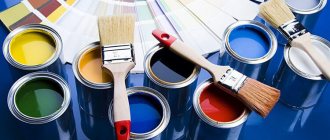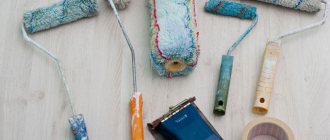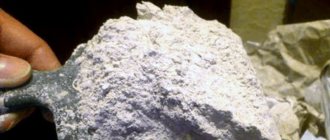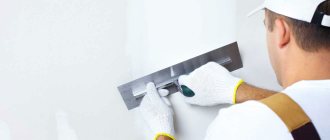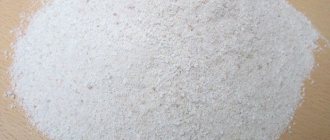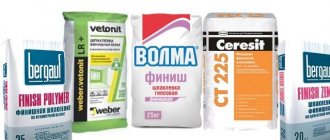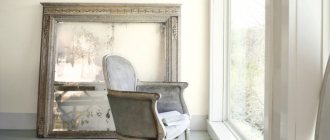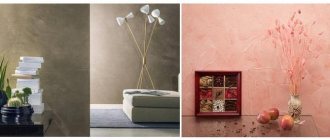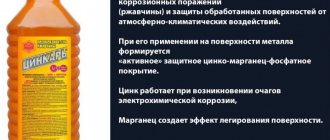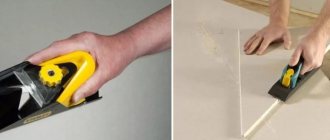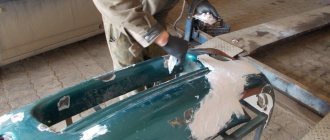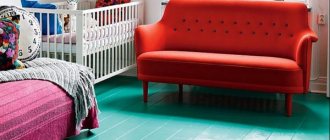For proper repairs in a house or apartment, it is worth preparing. First you need a flat surface. And this can be done if you use dry or ready-made putty.
If you are saving money, buy dry putty, because it is not inferior in quality, but is also cheaper. Be careful and attentive to the choice of material, because the quality of the work performed depends on it.
FER 15-04-027-05
FEDERAL UNIT PRICE FER 15-04-027-05
| Name | Unit |
| The third putty for high-quality painting on plaster and prefabricated structures: walls prepared for painting | 100 m2 of painted surface |
| Scope of work | |
| 01. Applying putty. 02. Surface grinding. | |
PRICE VALUES
The price does not contain overhead costs and estimated profits; accordingly, the direct costs of work for the period of 2000 are indicated (prices of the Moscow region), which are calculated based on 2009 standards. For further calculations, this cost must be multiplied by the conversion index to current prices.
You can go to the pricing page, which is calculated based on the 2014 edition standards with additions 1
| Total (RUB) | Workers' compensation | Machine operation | Pay for drivers | Cost of materials | Labor costs (person-hours) |
| 519,49 | 114,02 | 2,93 | 0,12 | 402,54 | 11,99 |
TOTAL PRICE: 519.49 RUR.
Look at the cost of this standard at current prices open page
Look at the resource part of the price in the GESN standard 15-04-027-05
When used in an estimate, the price requires indexation to translate into current prices. The price was compiled according to the GESN-2001 standards, as amended in 2009, in 2000 prices.
Estimates for building a house, repairing and finishing apartments - DefSmeta program The program provides an assistant that will turn drawing up estimates into a game.
Application area
Putties form a thinner structure than plasters
Starting putty, in terms of its purpose and area of use, is somewhere in the middle between plaster and finishing putties. It is used for leveling various rough bases - concrete and brick walls, as well as plastered surfaces.
Unlike plaster, the basic putty composition uses a filler of a finer fraction. This allows you to obtain a finer surface structure after treatment than after plastering.
To ensure that the putty surface lasts as long as possible, it is recommended to use mixtures from the same manufacturer for plastering and puttying. Created using the same technologies using a mutually compatible set of components, they will be able to combine in the best possible way.
Finishing compounds are applied in a thinner layer
The starting putty differs from the finishing putty in the ability to apply a thicker layer, but at the same time, the base compositions differ from the finishing ones in having a coarser texture, which does not allow them to be used as a direct base for some finishing materials - paints and varnishes, wallpaper with a fine texture, etc. .
Unlike finishing types, starting mixtures can be applied in several stages, obtaining fairly thick layers up to 1.5 - 2 cm.
Using basic putty, you can repair minor defects in load-bearing surfaces: small deviations of the surface from the vertical or horizontal level, cracks and crevices in the wall, sinks, potholes in concrete and brick.
So, you should pay priority attention to the starting putty if you need:
- after installing the door or window frame, seal the resulting gap between it and the wall opening;
- fill grooves for electrical wiring in concrete and brick walls;
- seal the joints between the wall and floor slabs, as well as between other structures.
Criterias of choice
The putty is selected taking into account the base material and operating conditions.
The putty mixture must be selected taking into account the surface material, temperature conditions, and humidity level in the room:
- Almost any starting or universal putty is suitable for leveling indoor walls In the bathroom, it is advisable to apply an acrylic or cement mixture.
- For the ceiling it is easier to use acrylic compounds or gypsum.
- for wooden surfaces.
- for processing drywall .
- For exterior work, a cement or acrylic mixture is suitable.
Putty for painting walls can be made of gypsum or polymer. If you plan to glue wallpaper, you can get by with a cement mixture.
Question to the expert
How to calculate consumption?
To calculate the putty consumption per 1 m², you need to take into account the material of the work area. Plastered surfaces require more mixture, unlike drywall. The average consumption of any composition is indicated by the manufacturer on the packaging. Much depends on the thickness of the layer.
Types of starting putty compositions
All starting putty compositions are divided into three large groups depending on their composition and into two groups depending on the method of application.
Mixture composition
Polymer putties are the most durable
By and large, the composition of both base and finishing plasters is largely identical.
They differ only in the size of the filler fractions and the type of binding components. Both solutions are:
- Cement. They use various types of cement as a binder. They have a gray color of varying saturation. Among their distinctive qualities, mention should be made of their high resistance to dampness. But at the same time, when drying, cement compositions shrink strongly, which can lead to cracking if an excessively thick layer is applied. Such mixtures are well suited for finishing building facades, treating walls and ceilings in bathrooms, kitchens, saunas, baths, etc. Using cement mixtures, you can putty door and window slopes.
- Plaster. They are distinguished by their bright white color. They are created on the basis of gypsum, as a result of which they are not sufficiently resistant to moisture. At the same time, gypsum starting putty is elastic and does not shrink when dried. The drying time of the treated surface is much shorter than that of cement compositions.
- Polymer. The most high-tech version of putty compositions, created on the basis of polymer compounds. They can be either white or light gray. They have a long service life, are flexible and easy to use. Among the main disadvantages of polymer mixtures is their high cost compared to cement and gypsum compositions. They are universal in application - they can be used for both external and internal work.
Cement compositions in some cases have a dark gray color, so they can be visible through a thin layer of finishing putty or light paint. If you plan to apply a light-colored finish to the wall, it is better to use gypsum solutions as a base.
According to their purpose, starting putty compositions can be:
- for outdoor work;
- for interior work.
Facade compositions must withstand atmospheric conditions well
For external work, special compounds are used that are resistant to aggressive external influences. First of all, they must tolerate high humidity well, which is why they mainly use cement and polymer putty for finishing facades. The same mixtures are also used when working in rooms with difficult operating conditions.
For interior work, you can use any of all types of starting mixtures - cement, gypsum, polymer.
But provided that the room being finished has normal air humidity, not exceeding 65 - 70%. Otherwise, the use of gypsum compositions is contraindicated.
TOP 3 best putties for walls on concrete under wallpaper
In most houses, the walls are made of concrete, so special putties are required to level such material. Three products were recognized as the best putties for walls on concrete under wallpaper in 2021.
DANOGIPS SuperFinish
The polymer-based finishing putty, completely ready for use, has a paste-like consistency. Due to this, the composition is easy to apply, evenly distributed over the surface and efficiently fills any cracks and holes.
Thanks to its excellent adhesion properties and thick consistency, even beginners will not have any difficulties applying the putty to the surface. In addition, using this product you can easily mask the joints and seams between sheets of drywall.
The product is only suitable for use in dry rooms. The finished coating is perfectly smooth and practically does not require grouting, so you can start painting or wallpapering immediately after the finishing layer of putty has dried. Since the product perfectly fills all unevenness, a layer up to 2 mm thick is sufficient to mask defects and level concrete or plastered walls.
Specifications:
- base - polymer;
- type - finishing;
- dries in 24 hours;
- material: concrete, plasterboard.
pros
- paste-like consistency makes application easy;
- perfectly masks defects and irregularities;
- easy to smooth out;
- without smell;
- comes in a large and convenient package.
Minuses
- grain size too high;
- When applied in a thin layer it begins to crumble.
Weber VH
Cement-based finishing putty has the necessary properties and characteristics for high-quality
treating walls before painting or wallpapering.
The dried coating is resistant to moisture, so the putty can be used to level walls even in rooms with high humidity. In addition, the putty prevents the development of fungus and mold, which makes it possible to use it for treating walls and ceilings in kitchens and bathrooms.
The mixture is dry and comes in large bags, so before starting work it will have to be brought to the desired consistency by hand by adding a certain amount of water. Information about the optimal amount of liquid is indicated on the packaging, so even beginners will not have any difficulties preparing the working solution.
If you need to apply several layers of putty, you should be prepared for the fact that each will take 48 hours to dry, but the finished coating will be extremely durable and resistant to cracking.
Specifications:
- base - cement;
- type - finishing;
- dries in 48 hours;
- material: concrete, plasterboard, brick, tile.
pros
- heavy packaging weight;
- simple and easy mixing;
- perfectly hides uneven walls;
- suitable for rooms with high humidity;
- Detailed instructions for preparing the working solution are on the packaging.
Minuses
- the price is higher than that of analogues;
- takes a long time to dry.
Prospectors Finish Plus
This putty is made on the basis of polymers and cement with the addition of modifying additives. Thanks to this mixture
suitable for interior finishing work not only in dry rooms, but also in rooms with high humidity.
Another advantage of the product is that it can be applied to almost any surface, from concrete and cement plaster to drywall and old layers of high-grain putties.
The product has increased adhesion, so it adheres well to almost any surface. The product also perfectly masks seams, unevenness and other wall defects.
As a result, the finished coating is suitable for subsequent wallpapering, painting or decorative plaster. It should be borne in mind that when applied to porous surfaces, they must be treated with a primer of a similar brand to increase adhesion properties.
Specifications:
- base - polymer;
- type - finishing;
- dries in 24 hours;
- material: concrete, plasterboard.
pros
- adequate price;
- suitable for wet areas;
- perfectly masks surface defects;
- increased plasticity;
- does not crack or shrink.
Minuses
- takes a long time to dry;
- you need to prepare a working solution.
Making your own starting putty
On the modern market of finishing materials there is a huge range of different putty compositions, including basic varieties. However, in some cases large hardware stores may not be available.
For example, when a house located somewhere in the countryside is being renovated. The table below provides recipes for preparing starting putties at home.
| № | Name | Application area | Preparation |
| 1 | Gypsum-chalk | Leveling walls made of concrete and gypsum plasterboard in dry rooms | Mix 1 part plaster and 3 parts chalk in a dry bowl. Gradually, while stirring, pour the mixture into a container with a 5% solution of wood glue and stir until smooth. Use immediately - the solution hardens quickly. |
| 2 | Oily | Wooden surfaces exposed to temperature changes (wooden façade cladding, window frames). | Mix 2 kg of chalk with 1 kg of drying oil, add 0.1 kg of drier and put the mixture on fire. Bring carefully to a boil and cool. Use warm. |
Technique for working with basic putty
Starter putty, like other putty compounds, should be applied to previously prepared substrates. For more information about basic putty, watch this video:
Surface preparation
It is necessary to clean the wall from dirt, dust and previous coatings
Before applying putty, the surface must be cleaned of dust and other contaminants. You should also remove all loose and crumbling elements in advance. To clean the base, you can use any of the most suitable tools.
If you plan to apply the start putty on a freshly plastered surface, then it will be enough to vacuum it or walk over it with a wet sponge to remove dust.
The primer will improve adhesion with putty
In the case where an old wall is being processed, it will be necessary to remove all loose components, as well as the old finish. To do this, you can use a metal brush and spatula, and in particularly “difficult” cases, a grinding machine. Fatty and oily stains can be removed using any organic solvents - from acetone to regular gasoline.
After cleaning the surface, it should be primed. This operation is performed to increase the adhesion rate between the base and the putty mixture applied to it. The soil composition should be selected in accordance with the location of the work - outdoors or inside a building.
Also, special attention should be paid to the compatibility of the primer with putty - compositions containing different chemical components may conflict with each other. As a result, applied layers of finish may peel off from the substrate or crack.
You can obtain information about the compatibility of the primer with a particular composition of the starting putty on the packaging and in the instructions for use.
Preparation of the solution
Dry mixtures are diluted with water in the specified proportions
Polymer compositions are most often supplied to the market in the form of a ready-to-use solution, packaged in hermetically sealed buckets. However, they are only conditionally ready for use.
During their stay in the warehouse, a separation of components inevitably occurred in them: heavier fillers settled to the bottom, and lighter fillers rose to the top, therefore, to restore the technical qualities of the mixture, it should be thoroughly mixed using a drill and a mixer attachment.
Gypsum and cement start-putties are sold mainly in the form of dry mixtures. To prepare the solution, dilute them with clean water at room temperature in the proportions indicated on the package.
In this case, you first need to pour the required amount of water into the container, and only then pour in the dry mixture, while simultaneously stirring it with a nozzle. Then the solution is left for 5-15 minutes so that all components are saturated with moisture, after which it is mixed again with a mixer.
When preparing the solution, it should be taken into account that gypsum and some polymer compositions harden quite quickly, so you should not prepare the solution “with a reserve”. The excess solution will still have to be thrown away, since it will no longer be possible to revive the frozen mixture.
Application of the solution
The starting putty is applied to the surface of the base using wide and narrow spatulas. If it is necessary to process a large surface, take a tool 40–60 cm wide. The finished solution is scooped out of a bucket with a narrow spatula and applied to a wide one. After this, the putty is distributed over the surface with wide and smooth strokes. For more information about choosing putty, watch this video:
The advantage of the base mixture is that it can be applied in a fairly thick layer of up to 1 - 1.5 cm. If you need to get a thicker coating, then the solution can be applied in two or three layers, each of which is placed only after the previous one has set.
After the entire surface has been treated, the putty should be given some time to gain hardness, and then leveled with grout. You can also sand the dried putty with medium- and fine-grained sandpaper to obtain a finer texture. After this, the putty surface is ready for applying a primer and a subsequent finishing layer of putty.
TOP 3 best latex putties for walls under wallpaper
Latex putties are produced in a form ready for use. Such products are applied very easily and evenly, so even a beginner can cope with leveling walls and ceilings.
TEX latex Pro
Inexpensive and completely ready-to-use latex-based putty, which is intended for internal
works
The balanced composition of the product ensures quick and uniform application, and the product itself does not spread or splash, and also perfectly levels the surface and masks even serious defects. The putty comes in a large package, so it is enough for finishing work throughout the entire room.
The composition of the putty allows it to be applied not only to walls, but also to ceilings. The base material can also be different, from ordinary brick, concrete and plaster to plasterboard structures. The good adhesion properties of the product allow you to effectively mask seams and joints, as well as fill cracks and other surface irregularities. After drying, the coating becomes suitable for wallpapering and painting.
Specifications:
- base - latex;
- type of room - dry;
- dries in 4 hours;
- material: concrete, plasterboard.
pros
- low price;
- easy and even application;
- supplied as a ready-to-use solution;
- perfectly masks defects;
- Suitable for leveling joints between sheets of drywall.
Minuses
- Suitable for dry rooms only;
- sets very quickly.
DANOGIPS Dano Box 1
The main feature of this putty is that it comes complete with a spatula that is attached to the lid.
Thus, the product is a completely ready-to-use kit for repair and finishing work. The putty is made on the basis of polymers, in particular latex, so the product is easily and evenly applied and is suitable even for beginners.
High adhesive properties and increased viscosity allow the putty to be used not only to mask surface defects, but also to fill cracks and other holes in plaster or concrete. The putty has no unpleasant odor and does not contain toxins, so it can be used for renovation and finishing work in children's rooms and medical institutions.
Specifications:
- base - latex;
- type - universal;
- dries in 24 hours;
- material: wood, stone, brick, concrete, plasterboard.
pros
- spatula included;
- suitable for different types of surfaces;
- easy to apply;
- effectively masks defects and smoothes the surface;
- a completely ready-to-use mixture.
Minuses
- not always on sale;
- not all users like the shape of the packaging.
TEX finishing Pro
White finishing putty of domestic production has all the necessary properties for high-quality
leveling walls and ceilings.
The finished coating is perfectly smooth and completely ready for painting or wallpapering. At the same time, the user should remember that the mixture dries quickly, so you should work with the putty quickly. The product is supplied ready for use, so you can start finishing work immediately after purchase.
The finished layer of putty dries quickly and does not crack over time, but the product can only be used in dry rooms, since the product is not suitable for rooms with high levels of humidity.
Since the putty has increased adhesion properties and perfectly fills all cracks and holes in the walls, for high-quality leveling of the walls and ceiling it is enough to apply only one layer up to 3 mm thick.
Specifications:
- base - latex;
- type - finishing;
- dries in 4 hours;
- material: concrete, plasterboard.
pros
- qualitatively levels the surface even when applied in one layer;
- affordable price;
- elastic consistency ensures easy application;
- dries quickly;
- does not drain or crack.
Minuses
- not very convenient packaging;
- not suitable for wet areas.
Peculiarities
All putties from Knauf are ready-made mixtures that can be used by absolutely anyone. For convenience, all products are packaged in paper bags of 25-30 kilograms. Putties are divided according to method of application and composition. The following categories can be distinguished:
- Putty start. It is made on the basis of gypsum or cement. Can be used for finishing walls and ceilings in residential premises. Thanks to its composition, it has a good margin of safety and provides additional sound insulation.
- Finishing mixtures. In addition to gypsum and cement, the composition contains lime. Thanks to this, the composition does not require additional grouting after application. In essence, this is a finished surface finishing.
- Universal compositions. They are characterized by fast setting. For the universal putty to adhere to the base, it is enough to wait only 30 minutes. It is worth noting that this mixture fully lives up to its name. It can be used to level walls and ceilings and eliminate joints. In addition, these compounds can be used on any surface. They contain astringent polymer additives that ensure reliable adhesion.
TOP 3 best gypsum putties for walls under wallpaper
Gypsum putties are absolutely deservedly popular among users, because such compounds are easily applied to vertical surfaces, effectively hide defects and have excellent adhesion.
KNAUF Uniflot
This gypsum putty is characterized by increased strength and easy application, and in terms of performance characteristics
and technical indicators are superior to many similar compounds.
The working solution can be applied to concrete and brick walls, and its excellent adhesion properties allow the mixture to be used for sealing and masking joints between plasterboard slabs. During operation, the putty does not shrink or crack, even if several layers have been applied to the surface.
The putty is made from environmentally friendly gypsum, so the finished coating does not harm human health and the environment. The putty is provided in a large bag weighing up to 5 kg, and to prepare a working solution, just add water to the dry mixture.
The product is available in white and gray colors, and since the finished coating is durable and perfectly smooth, the putty can be used as the only means of decorating walls and ceilings.
Specifications:
- base - gypsum;
- type of room - dry;
- water consumption per 1 kg 0.5 l;
- material: concrete, plasterboard.
pros
- perfectly masks unevenness;
- suitable for sealing seams between sheets of drywall;
- simple preparation of the working mixture;
- large packaging;
- allows you to create a dense and even coating.
Minuses
- some users think the price is too high;
- not always on sale.
Unis Blik
This snow-white putty is made on the basis of natural materials, therefore it does not harm human health and
environment.
The product is universal, so it can be used to mask wall defects and as a finishing coating for walls. The thickness of the layers can reach 8 mm, so the putty can be used to seal cracks and other serious wall defects. The mixture is available in powder form, so to prepare a working solution you will have to add water to it.
At the same time, the finished mixture does not harden and remains ready for use within 90 minutes after preparation. Finishing work will not take much time, even if it is necessary to apply several layers of putty, since each layer dries completely in 7 hours.
A properly prepared mixture does not splash, does not spread, and lies flat, so it can be used to finish walls, ceilings and partitions of complex shapes.
Specifications:
- base - gypsum;
- type - universal;
- dries in 7 hours;
- material: concrete, plasterboard.
pros
- dries quickly;
- does not contain toxic substances;
- suitable for sealing seams and masking serious irregularities;
- lays flat and easy;
- ease of preparation of the working solution.
Minuses
- the working solution hardens quickly, so you need to work quickly;
- high price.
Volma Shov
Special gypsum putty of domestic production is a universal composition, so it can be used
both for masking wall defects and for creating a perfectly smooth finishing coating.
The product is made on the basis of natural gypsum and does not contain toxic substances, therefore both the working solution and the finished coating are absolutely safe for human health and the environment.
Since the product is universal, it has a wide range of applications. It is used for sealing seams between sheets of drywall, correcting defects in walls made of various materials, and for final leveling of walls and ceilings.
Before application, the base must be properly prepared. It must be dry, free of dust and small particles of contaminants. To prepare the working solution, pour 1 kg of dry mixture into 0.6 liters of water and mix thoroughly.
Specifications:
- base - gypsum;
- type - universal;
- dries in 24 hours;
- material: brick, concrete, plasterboard.
pros
- reliable domestic manufacturer;
- suitable for leveling walls and ceilings;
- perfectly masks cracks and other defects;
- easy to use and convenient to apply;
- easy preparation of working solution.
Minuses
- the working solution dries too quickly;
- not always available for sale.
Types of Knauf starting mixtures
Surely not all people are construction professionals. Some people are just trying themselves as a finisher and therefore do not know which Knauf mixture they should give preference to. Therefore, for beginners and professionals, we will make a brief overview of gypsum-based starting mixtures. For interior decoration, it is recommended to use gypsum-containing mixtures. They are more convenient to use and less susceptible to shrinkage compared to cement compositions. So, let's begin.
Knauf Rotband
The best option for finishing interior spaces. The mixture can be called universal. It is suitable for leveling concrete, brick and polystyrene foam bases, and can be applied to walls and ceilings. In addition, the putty is impervious to damp environments, making it suitable for use in bathrooms and kitchens.
Putty Start Rotband has a number of undeniable advantages:
- Good moisture conductivity. After using this putty, moisture does not remain in the room, and therefore there will be no dampness in the apartment.
- Environmentally friendly. There are no harmful chemical elements in the composition. The putty is based on gypsum, which does not cause allergic reactions in the body. Such mixtures can be used to decorate a children's room.
- Reliability. Rotband does not crack even when applied in a thick layer.
If the instructions for use are strictly followed, the result is an absolutely flat surface on which the finishing can be applied. Rotband putties can be of three shades: white, pink and gray. It is worth noting that the recommended application thickness can vary from 5 to 30 mm. About 8 kilograms of material will be required per square meter of area. Complete drying time is 6 days.
Knauf Goldband
In essence, this is a variation of the previous plaster, but there are significant differences between the two mixtures. For example: Goldband is for walls only. There are no adhesive components in the composition. Therefore, after complete drying, the putty may simply fall off the ceiling. But it is ideal for processing brick and concrete bases with deep relief. It is worth noting that Goldband can be applied in a fairly thick layer - up to 50 mm. The remaining characteristics of the putty are identical to Rotband Knauf.
Putty Start Knauf HP
This putty is available in two variations: for manual or machine use. This information is usually indicated on the packaging. For example: the MP 75 marking indicates that the mixture is intended for machine finishing of premises.
Important! Mixtures for machine use can be used manually, but vice versa is strictly prohibited! Putties for manual use can ruin expensive finishing equipment.
Knauf HP Start is suitable for any hard surface. The maximum thickness of the applied layer should not exceed 30 millimeters. The composition dries in about 7 days; for one square meter of area you will need about 10 kilograms of material.
It is worth noting that this gypsum putty can be combined with other types of plasters.
TOP 3 best putties for walls on drywall under wallpaper
If your apartment or house has plasterboard structures that you plan to decorate with paint or wallpaper, you should apply a special putty designed specifically for such material.
Ceresit IN 95
This putty from a time-tested brand is intended for finishing rooms for further painting
or wallpapering. The composition of the mixture is suitable only for dry rooms, since at high humidity the putty layer may begin to collapse.
The product is completely ready for use, so you can start finishing work immediately after purchase. The putty comes in a large bucket with an airtight lid so the mixture will not thicken during storage.
The mixture is elastic, and this property is retained even after the layer of product has dried. As a result, the finished coating does not crack and has increased vapor permeability so that the wall covering can “breathe.”
All these properties make the putty suitable for leveling plasterboard sheets and masking the seams between them, but, if necessary, the product can be used for leveling and finishing concrete and plaster walls.
Specifications:
- base - polymer;
- type - finishing;
- dries in 4.5 hours;
- material: concrete, plasterboard.
pros
- easy to apply;
- a completely ready-to-use mixture;
- retains elasticity even after complete drying;
- does not crack;
- reasonable price.
Minuses
- dries too quickly;
- not intended for long-term storage.
Tikkurila Euro Filler
A distinctive feature of this mixture is that it has increased resistance to moisture, so it can be used
for processing and leveling walls not only in living rooms, but also in rooms with high humidity.
If the surface on which the putty will be applied is made of a porous material, it will have to be pre-treated with a primer of the same brand.
The putty is supplied fully prepared, so the user does not have to waste time preparing a working solution. The thick paste-like consistency perfectly hides wall defects, and the dried coating protects the wall from moisture, the spread of fungi and mold.
Specifications:
- base - acrylic;
- type - finishing;
- dries in 24 hours;
- material: concrete, plasterboard, wood.
pros
- suitable for wet areas;
- perfectly hides minor defects;
- easy to apply;
- the putty is completely ready for use;
- is resistant to cracking.
Minuses
- high price;
- not always on sale.
Weber KR
This putty is based on a binding component of organic origin, so the finished coating has not only
high quality, but also absolute safety for human health and the environment.
The putty is available in dry form, so the user will have to prepare the working solution themselves, using the instructions on the package. Another advantage of the product is its economical consumption, so one package of dry mixture is enough for large-scale finishing work.
Since the putty has excellent adhesion and covering properties, the user does not have to apply a finishing layer, and the finished coating dries quickly and does not crack.
Specifications:
- base - adhesive;
- type - finishing;
- dries in 24 hours;
- material: concrete, plasterboard.
pros
- economical consumption of dry mixture;
- large volume of packaging;
- easy to prepare working solution;
- the finished coating is easily sanded;
- lays down evenly and perfectly hides cracks and other defects.
Minuses
- there is an unpleasant odor;
- not always available for sale.
Mode of application
Working with Knauf dry starting mixtures occurs according to the following scheme:
- Preparatory stage. Before using rough putty, you need to prepare the base. To do this, remove all contaminants from the surface. By the way, the recommended temperature of the treated surface should not be lower than +5 degrees. After this, the main surface must be primed. This is especially true for surfaces that absorb moisture well. For example: aerated concrete blocks or sand-lime brick. You can use the product or Rotband-Grund as a primer. These primers are diluted with water in a ratio of 1/3 and applied to the surface with a roller or paint brush. Further work can be carried out only after the primer has completely dried. After this, beacons are installed on the surface. These devices will help greatly facilitate the work process.
- Technological process. Let's look at the procedure for working with Knauf dry mixes using START HP as an example. The composition is diluted in the following proportion: 1 bag (25 kg) per 14 liters of water. After pouring, the mixture must be thoroughly stirred until a homogeneous mass is obtained. This can be done by hand or using a mixer.
The solution is applied to the base using a spatula. Before setting begins, it is necessary to level the putty along the installed beacons. It is worth noting that the prepared solution must be used within 30-40 minutes. If the putty will be applied in two layers, it is recommended to make the surface of the first wavy. To do this, you can use a special spatula.
How to choose dry putty?
What exactly is a dry putty mixture? If you look at the photographs of the dry mixture, you will notice that this is a powder material that is prepared for work independently. The price of dry putties depends on the characteristics of the mixture.
Let's look at the main characteristics:
- Environmentally friendly. The first factor when choosing dry putty. The mixture used must be completely safe for humans during operation;
- Adhesion. Adhesion is the adhesion of putty to the surface;
- Resistance to external factors. The dry mixture must be completely resistant to temperature changes, moisture and mechanical damage;
- Dry putty should be easy to sand;
- Convergence. The mixture should form a smooth surface.
Pay attention to these characteristics; the price of dry mixtures depends on them.
